We're talking about the philisophy of time and how it relates to the image.
 Seen from about 6 billion kilometers (3.7 billion miles), Earth appears as a tiny dot within the darkness of deep space. Commons
Seen from about 6 billion kilometers (3.7 billion miles), Earth appears as a tiny dot within the darkness of deep space. Commons
Voyager One (1996) when it was four billion miles from earth.
A much more recent image:
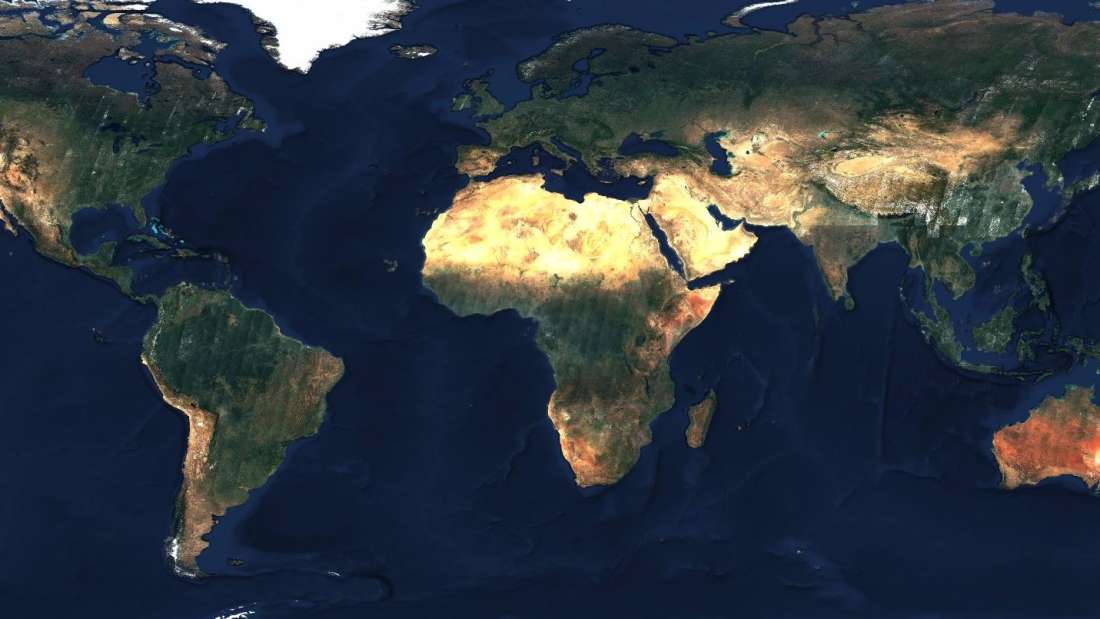
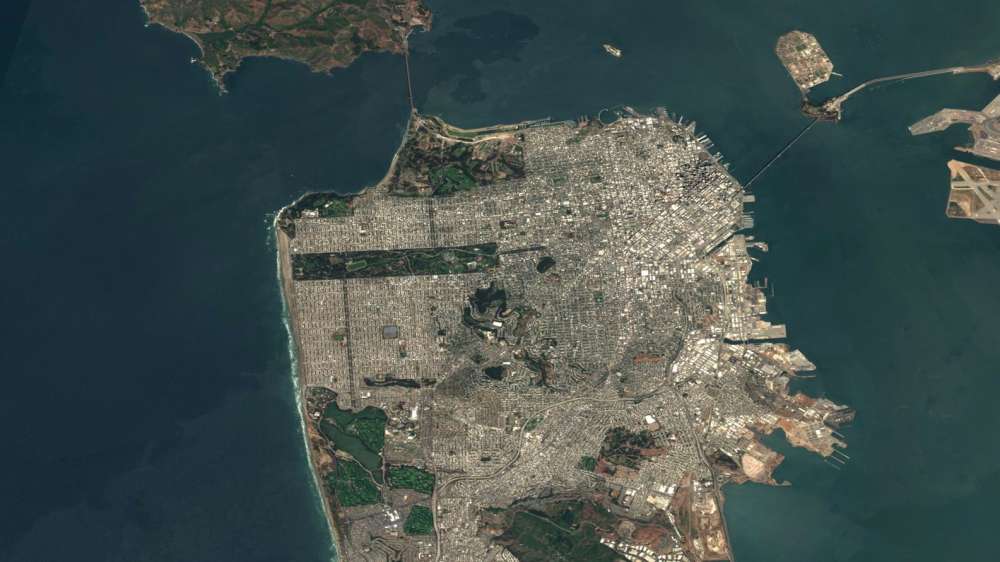 The mosaic of images was taken by the Sentinel-2 satellites, operated by the European Space Agency (ESA). It has 80 Trillion pixels. Source
The mosaic of images was taken by the Sentinel-2 satellites, operated by the European Space Agency (ESA). It has 80 Trillion pixels. Source
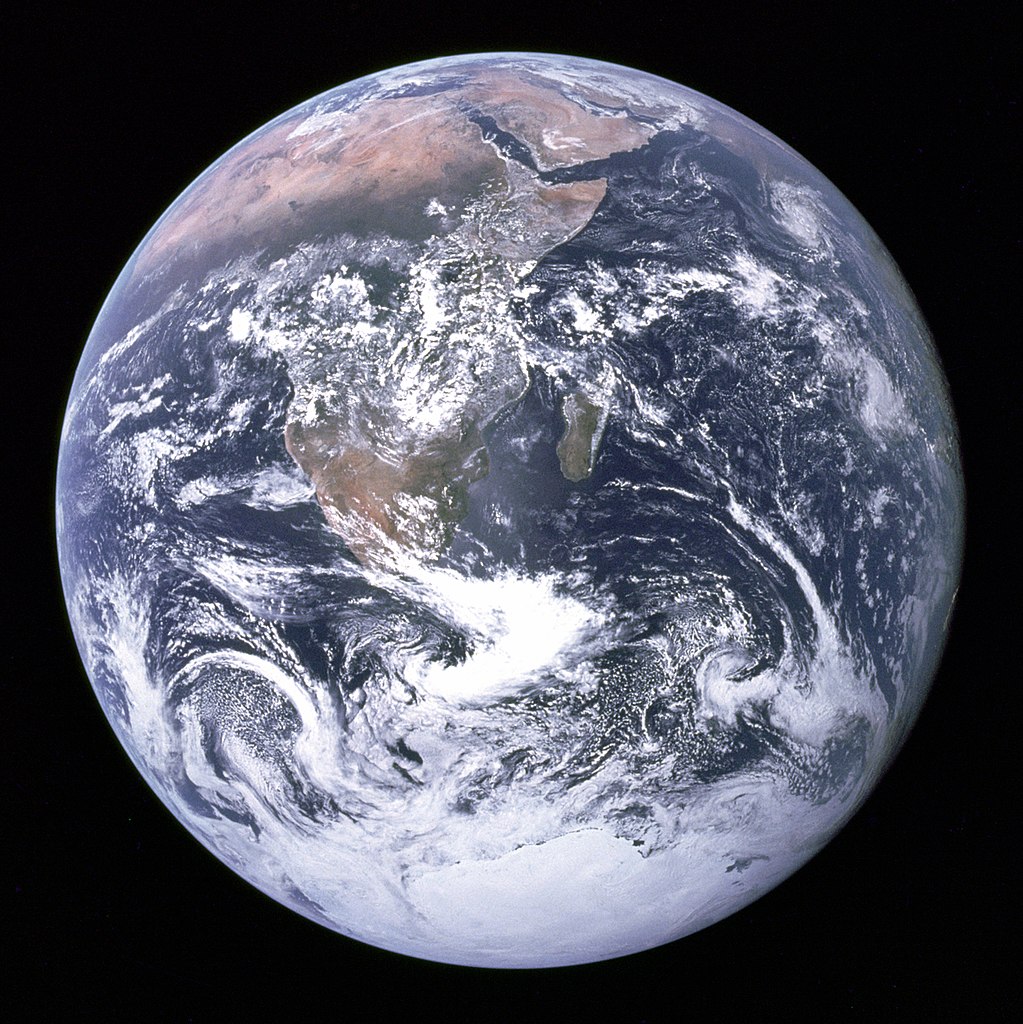 The Blue Marble, taken on December 7, 1972 by the crew of the Apollo 17. Commons
The Blue Marble, taken on December 7, 1972 by the crew of the Apollo 17. Commons
One of these is a medium format photograph (70mm), the other is a digital composite.
McLuhan (1964): Understanding Media
Our eletic extensions of ourselves simply by-pass space and time, and create problems of human involvement and organisation of which there is no precendent.
Voyager of course has the golden record. Carl Saegan and others decided put together the information that went on the golden record, which can be viewed online. In A Pale Blue Dot, the pixel is the fundamental unit of digital imagery. A constituent building block of the image.
[A zoomed in view of a pixel]
RGB lights make up a pixel, pixels are grouped into blocks which are grouped into macro blocks.
With digital compression, each frame you're looking at is composited in some way from what came before and after it. It's an interesting technological process, but also raises questions about the nature of image/time.
What, then, is time? If no one asks me, I know; If I ant to explain it to someone who aasks me, I do not know/
Edmund Husserl (1928): The Phenomenolegy of Internal Time-Consciousness
A now is always and essentially the edge-point of an interval of time
Philosphers distinguish between clock time and pure duration/lived experience
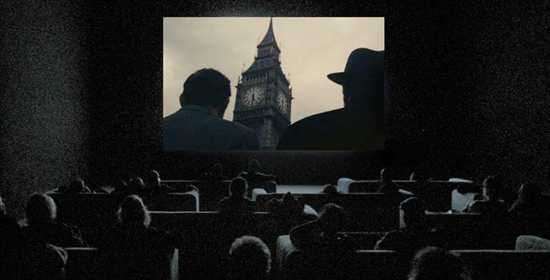 Christian Marclay (2010), The Clock. Tate, artcritical
Christian Marclay (2010), The Clock. Tate, artcritical
This moves regularly in clock-time, but all around these times.
Einstein Bern clocktower anecdote: If you move away from the clocktower at the speed of light, it looks like it's stopped.
Instant messaging is related to this (somehow). Inventions like the steam train change our understanding of time. Of course the only reason time zones exist is train travel.
What is now? Is it a moment? Is it an interval between moments?
Hegel: Phenomenology of Spirit (1807)
… we see that the Now is just this: To be no more just when it is.
Chris Marker (1963): La Jetee
The interesting thing abotu this is that the entire film is made from photographs, with the camera movign around the images. A kind of moving image visual essay composed from still images. The plot is a science fiction story where the protagonist sees a future version of himself dying at an airport, travels back and forth to prevent WW3 etc.
Plays on our temporal understanding of how narrative works.
Andre Bazin (1960): The ontology of the photographic image
The photographic image is the object itself, the object freed from the condition of time and space that govern it… photography does not create eternity, as art does, it embalms time.. for the first time the image of things is likewise the image of their duration
Unlike other art forms, photography doesn't create eternity but embalms time, hold time within it that is fundamentally different to other kinds of art.
The photograph is (arguably) an indexical image (see also Catrin Morgan), while other images are icons.
The Lumière Brothers (1895): Arrival of a Train at La Ciotat
The cinematograph is an invention without a future
Cinema in its indexical form only really lasts for 100 years from the 1890s to the 1990s, when CGI images start to appear.
Cubitt (2005): The cinema effect
The moving image moves. But where does that movement come from? .. What then is it to speak to speak of a" moving image, constructed from thousannds of constituent images? In what sense is it an image? … When is the object of cinema? When, indeed, is the moving image?
Film makers on the question:
Werner Nekes (1977): Whatever happens between the pictures
Every change from one frame to the next is a montage
$$\frac{Pixel}{Earth} = \frac{Frame}{Film}$$
Peter Kubelka (1967):
It's between frames where cinema speaks
Rudolf Arnheim (1933): Film as Art talks about film as an imperceptible montage.
$$\frac{Moment}{Time} = \frac{Frame}{Film}$$
These people all think about movement in its smallest part / component. Others look at it from the other end - talking more about duration.
Tarkovsky (1979): Railroad sequence from Stalker.
Based on Roadside Picknick
Tarkovsky says he wants time and duration to be revealed, as if the whole film is shot in one take. The film is about duration in many different ways. The film switches to colour once the characters get to the zone.
In those days there were of course technical limitations on shot length, now you can stream forever.
Tarkovsky also wrote a lot.
Sculpting in Time (1989):
… we could defnine [cinema] as sculpting in time. Just as a csculptor takes a limp of marble, an, inwardly conscious of the feature of his finished piece
Jackie Heatfield (2006): Resisting Taxonomy:
[cinema is] is a synasthetic, sensuous, experiential, live, time-based thing, presence is central to its becoming. A single moment, never to be repeated, and in its complete form it eill resonate onliy in the menoru of tis audience. How does this work gt written into history? How does an historiean map this perceptual intangible language?
Timelapse also expands on the moment.
Emily Richardson (2008): Cobra Mist
Traces of military history in this landscape. Much of what took place there is still under the secrets act.
Contrast this film with Tarkovsky. Both run at the same frame rate, but they expand and contract time in different ways.
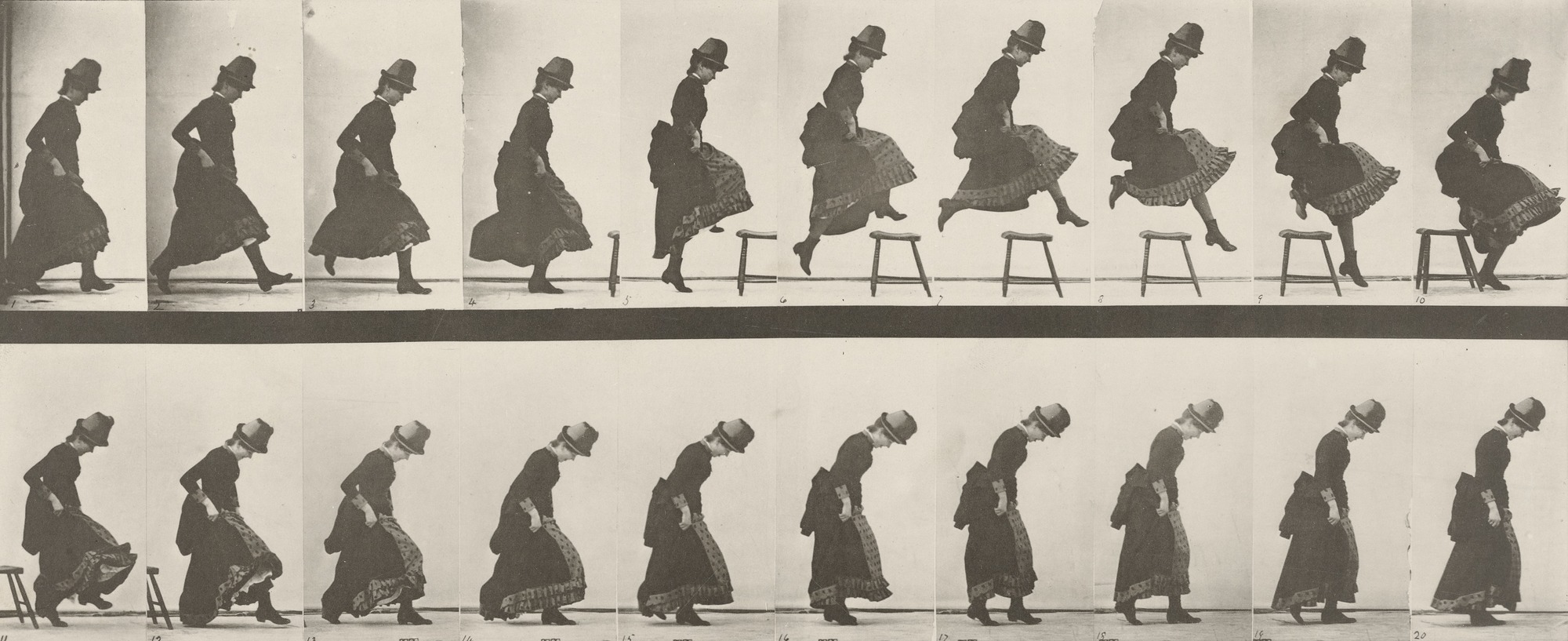 Eadweard J. Muybridge (1887): Woman Jumping, Running Straight High Jump: Plate 156 from Animal Locomotion. MoMA
Eadweard J. Muybridge (1887): Woman Jumping, Running Straight High Jump: Plate 156 from Animal Locomotion. MoMA
Etienne-Jules Maray (1882): Flying Pelican
Even a single photograph (through exposure time) contains a different amount of time - moment layerd on top of each other.
Henri Bergson (1907): Creative Evolution:
What is real is the continual change of form: form is only a snapshot view of a transition... out perception manages to solidify into discontinnuous images the fluidity of the real
We imagine reality to be made up of distinct moments, but thats oonly an effect of our perception
Norman McLaren (1968): Pas De Deux on how a performance and its recording work together.
Laura Mulvey (2006): Death 24x a Second:
Fundamental, and irreconcilable, opposition between stillness and movement that reverberates across the aesthetic of cinemas.
Talks about the engagement of time the view has changes with digital media. Rather than seeing a whole film in the cinema, we look at clips, rewind, have two things open at the same time etc.
Sugomoto: Cinema Dome is a whole film in one photo - again time embalmed in the photograph. Lots of people have explored of how digital images (above) work on the viewer.
Zbig Rybczynski (1975): New Book
This starts to explore multiple times happening at the same time - the same story happening on 9 screens at the same time. [Timecode] (2000) is the Hollywood version of this - four cameras in a single shot showing the same story, sometimes showing the same scene, other times diverging.
Tango (1980)
McLuhan (again) in The Language of new media:
Spatial montage represents an alternative to traditional cinematic temporal montage, replacing its traditional sequential mode with a spatial one. the logic replacement charctersitic to cinema, gives way to the logic of addition and coexistence. time becomes spatialized, distributed over the surface of the screen
This anticipates multiple windows, screens we're used to today.
Manovich continues:
[cinema is] .. no longer a n incdexial media technology, but, rather, a sub-genre of painting... the mutability f digital data mpars the value of cinema recordings as documents of reallity.. digital cinema is a particular case of animation
[Suky Best (2011): Alwyn Park Houe]
Compare to Manovich: How does the digital image relate to reality?
Tal Rosner (2008): *Without You
- Also on Manovich's idea of cinema becoming a painting of sorts. Also Josef Albers.
Zygmunt Bauman (2000): Liquid Modernity:
There are reasons to consider fluidity or liquidity as fitting metaphors when we wish to grasp the nature of the present, in many ways novel phase in the history of modernity.
Plato, Cratylus:
Socrates: Heraclitus says somewhere that 'everything gives way and nothing stands fast' and, likening the things that are to the flowing of a river'
Gareth Polmeer (2011): Sea
1080 1x1920 videos played together. Each video is a pan across a sea scape. Different times in the same frame, experience of time and its representation, nature of the digitial image (made up of lines, continuous flow of time because compression).
Hegel (1832): Science of Logic:
Something moves, not because at one moment it is here and at another there, but becuase at one and the same moment it is here and not here, because in this 'here', it at once is and is not ... motion is existent contradiction itself.
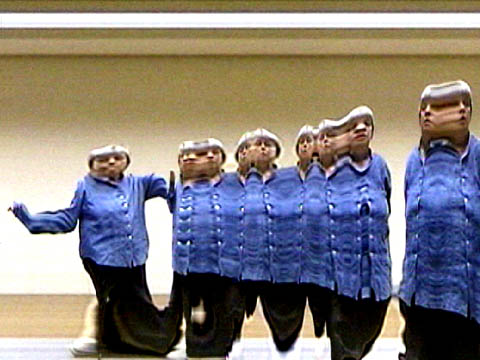 Steina Vasulka (2000): Warp. Source
Steina Vasulka (2000): Warp. Source
Slit-Scan photography is a process where slices of the image are taken across time.
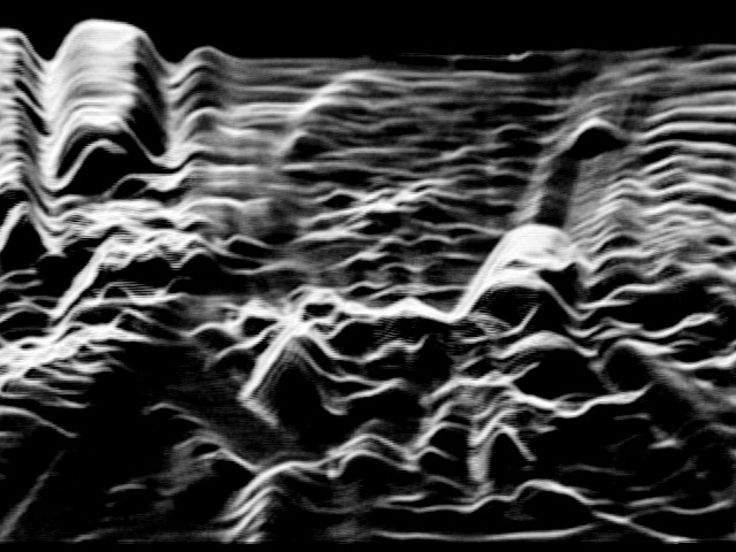 Woody Vasulka (1974): C-Trend. Source
Woody Vasulka (1974): C-Trend. Source
This is a video being modified by analogue synthesizer hardware.
Suddenly montage becomes about manipulation of data as much as images.
Tom Gunning (2012): Moving away from the Index: Cinema and the Impression of Reality
If cinema should be approached should be as animation, then cinematic motion rather tahn photographic imagery becomes primary.